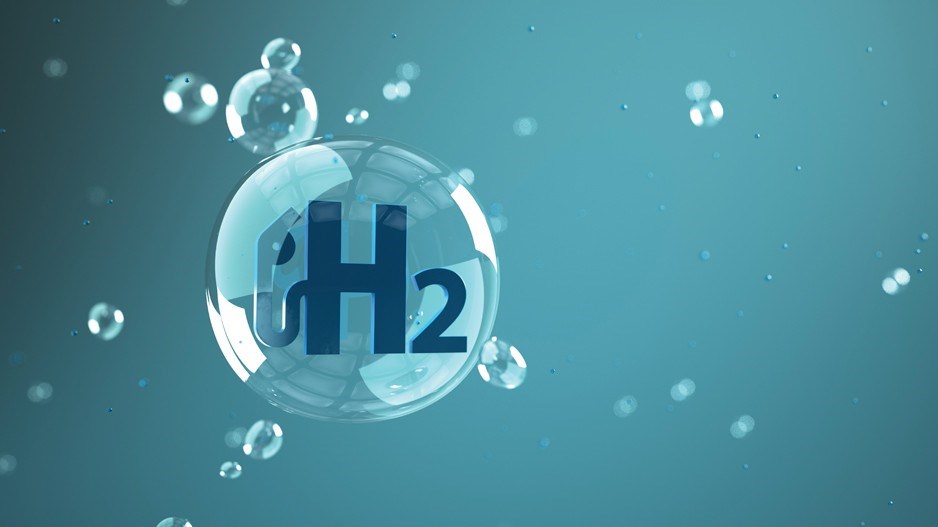The Justin Trudeau government announced a new energy strategy at the end of 2020 that managed to please both clean energy advocates and the Alberta government.
The federal government’s new hydrogen strategy drew praise from the Pembina Institute and Clean Energy Canada, as well as from Alberta Energy Minister Sonia Savage and the Alberta Chamber of Commerce.
“As a province central to Canada’s efforts to build a globally groundbreaking clean hydrogen sector, Alberta’s government supports Ottawa’s work on a collaborative strategy that will rely on our industry’s experience and expertise in natural resource production and emissions reduction technology,” Savage said.
Not surprisingly, it also drew praise from B.C. hydrogen technology companies like Ballard Power Systems (TSX,NYSE:BLDP), HTEC and Ionomr Innovations.
“The strategy represents a tremendous business opportunity for Canada’s leading hydrogen and fuel cell technology and energy companies,” said Ballard CEO Randy MacEwan.
Ionomr has developed ion exchange membranes for fuel cells that the company says improves efficiency and lowers costs. A new hydrogen industry is also likely to spur investment in Canadian carbon capture technology, because it will be an essential part of “blue hydrogen” production.
Both Alberta and B.C. are well situated to leverage their abundant natural gas assets to develop blue hydrogen production, which combines natural gas with carbon capture and storage.
Provinces with abundant clean hydropower, like B.C. and Manitoba, are also positioning themselves to develop “green” hydrogen production, which involves using electricity to split water atoms to produce streams of pure hydrogen.
Financing is already in place for a green hydrogen production plant in Chetwynd, B.C., that would use B.C.’s abundant water and clean hydro and wind power to produce hydrogen for natural gas pipeline injections.
The International Energy Agency (IEA) predicts that hydrogen use and production is set to boom globally, driven by decarbonization efforts and the fact that hydrogen is a highly flexible low carbon energy source that can fill many niches not otherwise filled by other low-carbon energy sources. It can be burned as an alternative to natural gas in industrial processes, like steel making, injected into natural gas streams to lower its carbon content or used in fuel cells to produce zero-emission electricity.
“As one of the top 10 producers of hydrogen in the world, Canada will benefit from the growing global demand for hydrogen — a market that is expected to reach almost $12 trillion by 2050,” the Trudeau government said in a press release. The new Canadian strategy includes seed funding in the form of the $1.5 billion Low-carbon and Zero-emissions Fuels Fund to help attract private investment.
“It’s a great start,” Mark Kirby, president of the Canadian Hydrogen and Fuel Cells Association, told BIV. “But there is going to need to be more.”
Canada was late out of the gate in developing a liquefied natural gas (LNG) industry – eclipsed by Australia and the U.S. in building new LNG projects – so if it doesn’t want to be beat on hydrogen as well, support from both federal and provincial governments will be needed.
Several countries have already launched major hydrogen economy strategies.
“If you look at the investments being made by our competitors in Europe, in Japan … Netherlands, Australia, we will need to see more federal and provincial investment to de-risk those early adopters,” Kirby said.
Alberta is currently Canada’s biggest producer of grey hydrogen, which is made from natural gas, and aspires to also become a producer of blue hydrogen. Hydrogen is seen as a critical off-ramp for Alberta’s oil and gas industries.
B.C. has the natural resources needed to produce green and blue hydrogen.
There could also be synergies in developing hydrogen production alongside the natural gas industry and nascent LNG industry, which is building the pipelines and export terminals that might also serve as a springboard for hydrogen production and export.
Financing is already in place for B.C.’s first green hydrogen production plant. Earlier in 2020, Macquarie Capital (MQG:ASE) announced it will finance the $200-plus million Sundance Hydrogen plant – a partnership between Renewable Hydrogen Canada (RH2C) and FortisBC – in Chetwynd.
Once in production, hydrogen would be injected into the natural gas pipeline system that supplies B.C. and the U.S. to lower its carbon content. That will require getting regulatory approvals at both provincial and state levels.
Meanwhile, Juergen Puetter, one of B.C.’s wind power pioneers and founder and CEO of RH2C, said the company has also spun out a new subsidiary, Pacific Hydrogen Canada, to build an export terminal on the B.C. coast to export green hydrogen to California, Japan and South Korea.
“We have the advantage in B.C. that we can scale up low carbon hydrogen production, and we can do that cost effectively,” Kirby said. “But without question there is going to have to be investment from the private sector.”
Although the pioneer in hydrogen fuel cell technology is a B.C. company – Ballard Power Systems – there aren’t many hydrogen fuel cell vehicles on the province’s roads yet.
Limitations include a lack of fuelling infrastructure and a reliable supply of hydrogen, much of which is still imported from other provinces or states.
On December 15, North Vancouver’s Hydrogen Technology and Energy Corp. (HTEC) announced a $20 million investment from Chart Industries Inc. to help HTEC build out its hydrogen-fuelling infrastructure in B.C.
The Canadian government estimates hydrogen production and use has the potential to reduce Canada’s GHG emissions by 45 million tonnes annually by 2030 and create 350,000 new jobs by 2050.
“As an increasing number of countries strive for net-zero emissions by 2050, they are looking to hydrogen for their clean energy needs,” said federal Environment and Climate Change Minister Jonathan Wilkinson.
“Canada is well positioned to be among the global leaders in hydrogen production, which will help to create thousands of jobs, grow our economy, cut pollution and put Canada on a path to exceeding our 2030 Paris Agreement target.”




